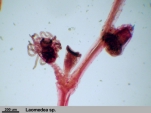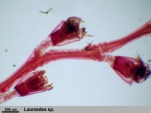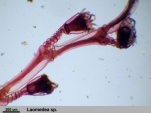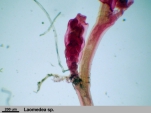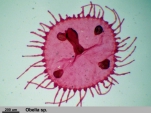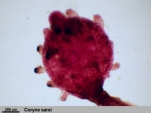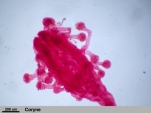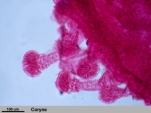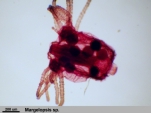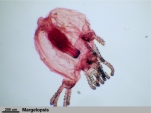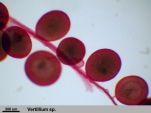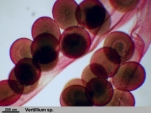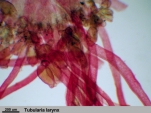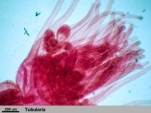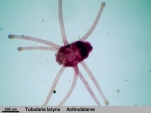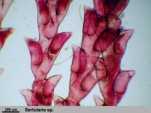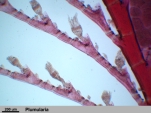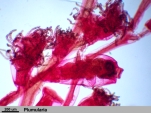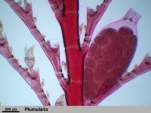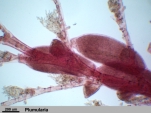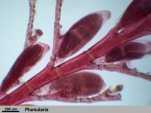HYDROZOANS
Hydrozoans are very appealing objects
to be investigated by amateurs. Most of them are marine animals. To study those
animals you may use a microscope with low magnification (objective 4x) or a
stereo microscope, which is much more appropriate. Sessile forms can easily
be collected in shallow water, planktic forms are collected using a plankton
net with meshes not too small.
The processing of the samples so
obtained is quite simple: Fixation with formaldehyde 4%, staining with borax-carmine,
dehydration with mixtures of alcohol / water of increasing content of alcohol,
treatment with isopropanol, after that treatment with toluene or xylene, then
mounting with artificial resin.
A characteristic feature of the reproduction
of these animals is a change between a sessile polyp stage and a planktic medusa
stage. The polyps bud off small medusae which develop gonads after having reached
maturity. After fertilization small larvae develop which settle at solid surfaces
and become polyps afterwards.
The reproductive scheme described
varies widely from group to group: The polyps very often form moss-like or branched
colonies (vegetative propagation). The medusa stage may be suppressed and the
gonads develop at highly specialized polyps. In that case the gonads are thought
to be the residue of completely reduced medusae. On the other hand there are
pelagic medusae without any polyp stage. It is this wealth of different shapes
in combination with the adaptation to different habitats which make these easily
obtainable animals so attractive to amateurs.
<
HOME >
Copyright: webmaster@mikrohamburg.de
